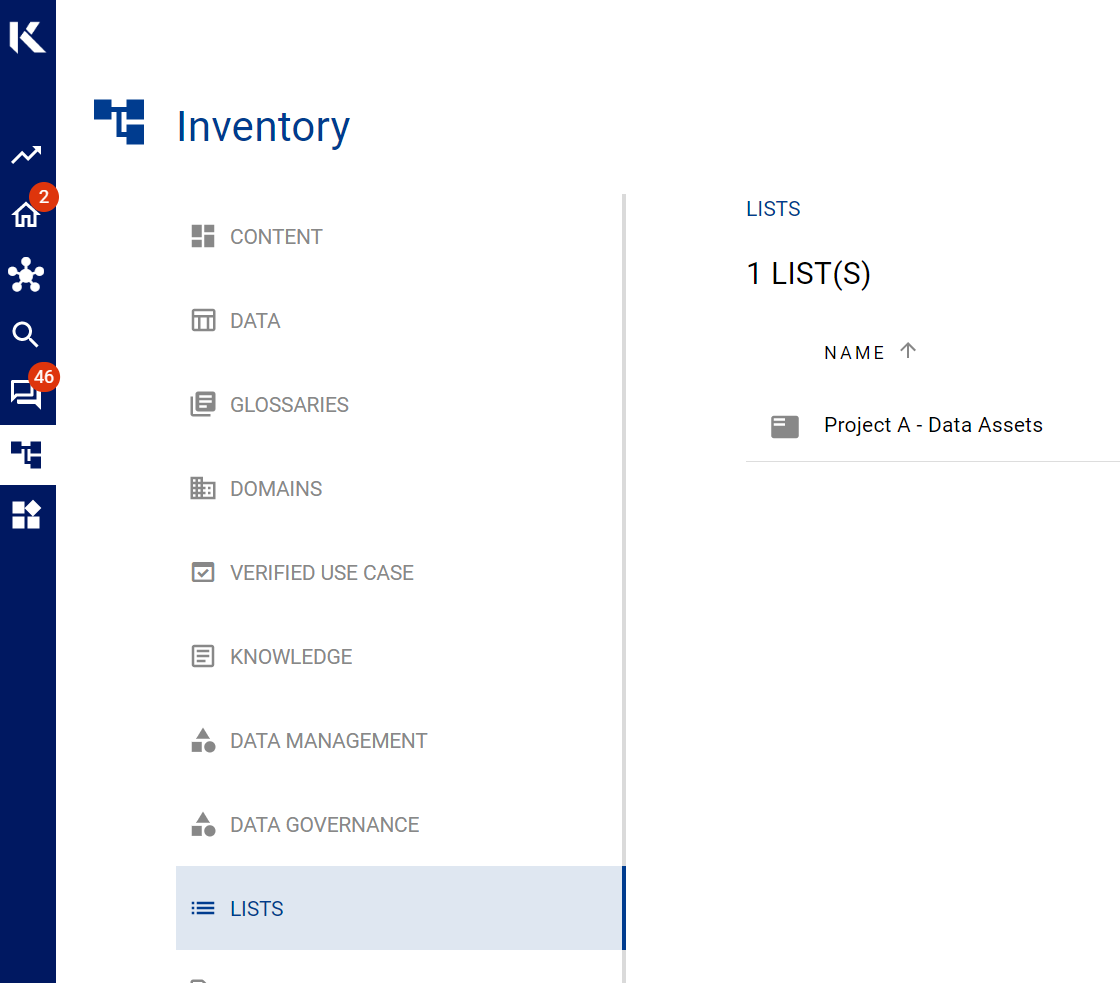Guide for Data Governance Managers
This 101 Guide is a brief overview of the K Platform designed specifically for Data Governance Managers.
We recommend all new K Data Governance Managers:
Personalise your K Platform setup by:
Refining your feed
Creating your own personal/team list
Checking to ensure your Data Owner/Steward dashboards are comprehensive
Review the following key Data Governance tools
Collections
Data Quality and Issue Management
Impact Assessments
Ask K
Change Tracking
Personalise your K Platform setup
In addition to the standard default Onboarding to K setups, we recommend Data Governance Users take the time check the set-up of a few other features:
Refine your personalised feed located on the Home Page
Your feed is influenced by what your data usage, what your team uses, and the data assets you choose to Follow
If there are data assets that you or your team doesn’t actively use but you want to stay notified of any key changes/updates for governance purposes, click the Follow button on the top right page of the data profile page

Create personal/team Lists to quickly access regularly used data assets.
Lists are great ways to group data assets that you are regularly working on or collaborating with other teams
You can add any data asset to a list by clicking on the Add to List button on the top right page of the data profile page.

Any list that you create appears on Your Data Ecosystem tab.

Anyone can navigate to your list by going to the Inventory

Check to ensure your Data Owner/Steward Dashboard is comprehensive
K Platform displays a unique dashboard for each Data Owner and Data Steward
Visit your dashboard and check to see if all your data assets are showing

If any Data Assets are missing, navigate to the Data Profile page and update the Data Owner/Steward with the correct details
K Data Governance tools
Collections
Collections are used to group a range of different data items to make discoverability and governance of data assets easier. For example, you can create a collection of Critical Data Elements.
It is important to first configure all the critical collections.
You can manually link data assets to a collection or create linking rules to automatically add items to a collection. Linking rules are a great way to automatically link data items to a collection using business rule written in a regex format (aka Regex Rule). They can create consistency and help save manual time and effort. Data items that no longer meet the Regex Rule will automatically be de-linked from the collection.
Visit the Collections page for more information.
Data Quality and Issue Management
K can store track, measure and manage data quality issues across your data ecosystem. Within the Data Quality collection, 6 defined data quality dimensions.
K has the ability to integrate with the following tools to help with quality and issue management:
Data Quality Management: DBT Cloud, DBT Core and Great Expectations.
Issue Management: JIRA projects
Visit the Managing Data Quality page for more information
Impact Assessments
K can help you automatically conduct impact assessments and notify impacted users. The K impact assessment allows you to assess the impact of changes to data items and identify impacted users. Common scenarios where an impact assessment would be helpful include:
Checking which data assets are impacted by a potential change
Quickly verifying which data assets have been impacted by an incident/issue
Generating a list of users, data owners or stewards of impacted data assets to contact
Data migration analysis
Visit the Impact Assessment page for more information
Ask K
Ask K is a self-service portal for extracts that answers common questions about your data ecosystem. Key self-service categories include:
Management: Understand usage across your Data Ecosystem: Data usage, Content usage and Team usage
Governance: Understand data classification, Personally Identifiable Information (PII) and known data issues
Risk: Review user access and and adhoc data behaviour
Surveys: Review results from user feedback and see who has contributed to the knowledge base
Cost: Identify opportunities to reduce cost or improve the cost allocation model
Platform: Data related to running and managing the K platform
Automated Change Tracking
K helps you catalog and identify changes to data items through automated change detection. On each data profile page under the Changes tab to view a timeline of all changes detected. Users can also add notes to provide more information about the changes detected.
Visit the Tracking Changes page for more information
For more tips, visit the Top Tips for Data Governance Users
